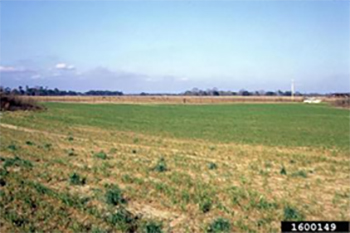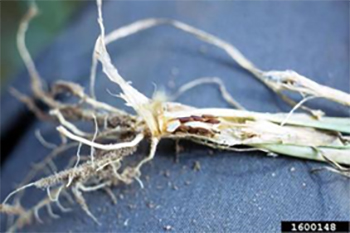PLANT PEST

Hessian flies
Exotic to Australia
Features: Tiny mosquito-like insects that have caused serious damage to wheat and barley crops in many parts of the world
Where it's from: Hessian flies are widespread in the USA and Europe. Other countries such as New Zealand, Africa, the Middle East and the Russian Federation have had detections of one or both of the pests.
How it spreads: Importation of infested crops, straw and other plant materials
At risk: Wheat, barley, triticale and rye
Both species of adult hessian fly are tiny and mosquito-like.
Scott Bauer, USDA Agricultural Research Service, Bugwood.org
Keep it out
Hessian flies (Mayetiola destructor and M. hordei) are serious pests of cereal crops and one of the most damaging insect pests in the world. It attacks the whole above ground part of cereal plants, resulting in stunted growth, less grain and a poor-quality crop. Up to 40 per cent crop losses have been recorded in severe infestations overseas, with the US and Spain reporting large amounts of damage in fields.
The fly in its adult stage is mosquito-like, just 2-4 mm long, and very difficult to control with pesticides. Females lay eggs on the upper surface of leaves, and larvae (grubs) make their way down to the leaf stem where they feed, damaging the plant.
If hessian flies were to make their way to Australia, they would damage grain crops, and some of our trading partners would reject our exports of grain and hay, to avoid importing the pest as well.

John C. French Sr., Retired, Universities: Auburn, GA, Clemson and U of MO, Bugwood.org

John C. French Sr., Bugwood.org
Importing goods
To keep hessian fly out of Australia, never ignore Australia’s strict biosecurity rules.
Import shipments may need to be treated and certified, so before you import, check our Biosecurity Import Conditions system (BICON).
What to look for
There are no flies in Australia that attack cereal plants above ground. Keep an eye out for:
- small flies 2-4 mm long
- white to red larvae, 3-4 mm in length, feeding at the base of the plant
- dark brown flaxseed-like pupae (cocoons) inside the base of the plant
- stunted and discoloured plants
- withering heads and lodging (collapse) in grain.
- M. hordei can be also be detected by galls on barley stems.
Where to look
Importers
Infested plants, straw and other plant material is the most likely way that hessian fly would make it to Australia.
Grain growers
- Check your wheat and barley crops frequently for the presence of new pests and diseases.
- Keep an eye out for poor growth, flies, larvae and flaxseed-like pupae in and around plants.
What to do
If you think you’ve found hessian fly:
- take a photo
- contain the material without disturbing it (this may be as simple as closing the doors on a shipping container or preventing access to a field)
- collect a sample of the insect, if it is possible to do so without disturbing the pest.
